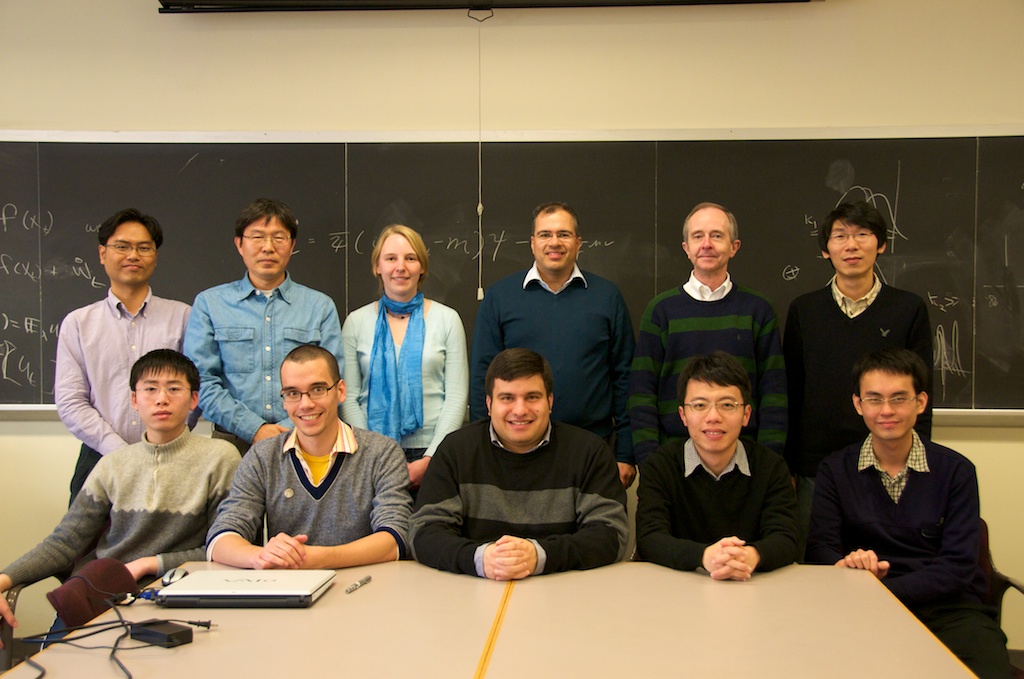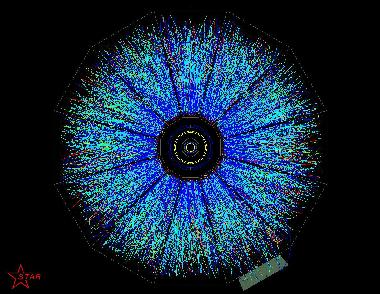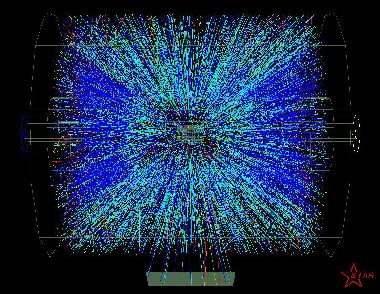

 Timeline of the history of the Universe and the evolution of matter from
the Big Bang to the present.
Timeline of the history of the Universe and the evolution of matter from
the Big Bang to the present.
The existence of a QGP can be theoretically inferred through lattice gauge simulations of QCD (see also the page on our group's activities in that sector), which provide the only rigorous method to compute the QCD equation of state. These simulations predict a phase transition of confined hadronic matter (such as protons and neutrons) to a deconfined state in which hadrons are dissolved into quarks and gluons. Further information, however, such as the critical temperature and energy-density for that phase-transition, depend crucially on the parameters of the simulation and the extrapolation from the discretized quantities on the lattice to the continuum of the real world.
Conditions for creating this highly excited state of primordial matter under controlled laboratory conditions using relativistic heavy ion collisions are currently being provided by the Relativistic Heavy Ion Collider (RHIC) at Brookhaven National Laboratory . RHIC collides gold nuclei at center of mass energies of 130 GeV and 200 GeV per nucleon-nucleon pair and thus creates a state of matter at the highest temperatures and densities possible in a laboratory environment. Experiments at RHIC have yielded many interesting and sometimes surprising results, which have not yet been fully evaluated or understood by theory.

|

|
The central problem in the study of the QGP is that the deconfined quanta of a QGP are not directly observable due to the fundamental confining property of the physical QCD vacuum. If we could see free quarks and gluons (as in ordinary plasmas) it would be trivial to verify the QCD prediction of the QGP state. However, nature chooses to hide those constituents within the confines of color neutral composite many body systems - hadrons. One of the main tasks in relativistic heavy-ion research is to find clear and unambiguous connections between the transient quark gluon plasma state and the observable hadronic final state.